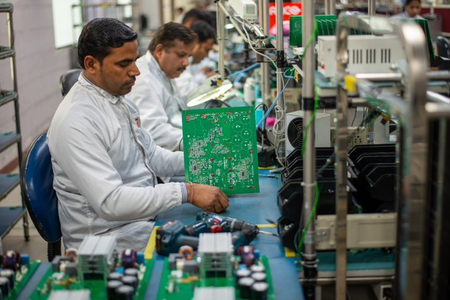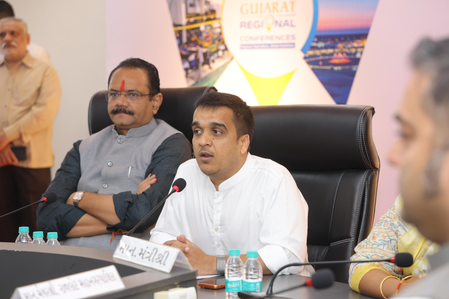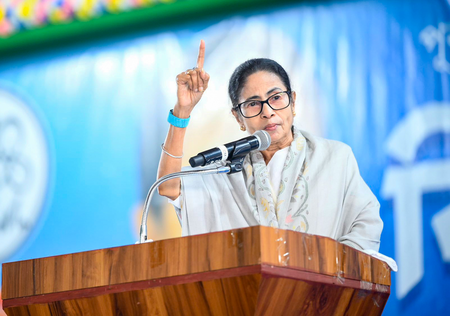
India’s wind power capacity has crossed the landmark 50 GW milestone, following the second-highest ever annual addition of 4,151 MW during FY 2024-25.
Karnataka emerged as the top-performing state this year, contributing 1,331.49 MW, pushing its total installed capacity to 7,351 MW.
The milestone marks a resurgence in the country’s wind sector, which had taken a back seat to solar over the last decade.
Gujarat retained its top spot in total installed capacity at 12,677 MW, adding 954.76 MW this year alone.
Tamil Nadu, the pioneer in India’s wind energy journey, stands second overall with 11,739 MW and added 1,136.37 MW this fiscal.
Wind energy in India began in the 1980s with a test turbine in Veraval, Gujarat, and took commercial shape with NEPC-Micon in Chennai in 1986.
The sector gained momentum in the 1990s, notably with the entry of Tulsi Tanti’s Suzlon, which later became a major global player.
For nearly two decades, wind power was India’s leading renewable energy source until solar overtook it in the early 2010s.
India’s solar capacity recently crossed 100 GW, but wind is making a strong comeback with the latest numbers.
Experts suggest India can install at least 6 GW of wind capacity annually, if enabling conditions persist.
Madhusudhan Khemka, from NEPC-Micon’s founding family, called the 50 GW mark “just the beginning.”
Industry veteran M P Ramesh believes the next 100 GW will be achieved at a faster pace.
Wind’s technical potential remains vast—up to 695 GW at 120m hub height and 1,164 GW at 150m.
Despite past slowdown due to aggressive bidding and project cancellations, the sector is now stabilizing.
U B Reddy of Enerfra Projects credited NIWE (formerly C-WET) for guiding the industry with reliable wind potential estimates.
Ramesh Kymal, ex-head of Vestas India and Gamesa, said wind energy’s progress is a “silent revolution” often overshadowed by solar.
The sector received a crucial policy push through waiver of interstate transmission system (ISTS) charges.
This enabled developers to set up projects anywhere and sell to SECI, the central auctioning agency.
However, most projects still chose Gujarat for its superior wind speeds and land availability.
The central government’s auction model, introduced in 2017, shifted the focus from state-led to national procurement.
But ultra-competitive bidding led to tariff drops below ₹2.50/kWh, causing viability concerns and stalled projects.
States like Tamil Nadu earlier paid over ₹4.16 per unit, a model now deemed outdated in today’s market.
As ISTS charge waivers are set to taper off from this quarter, developers may shift back to state-specific projects.
This will impact project economics, especially in states with lower wind speeds, leading to tariff hikes.
India’s energy planners will now need to recalibrate support policies to maintain momentum.
Climate start-ups and green energy innovators are also facing funding headwinds, potentially affecting future growth.
Yet, the push for renewables continues, with projects like Kolkata’s upcoming EV charging hub adding to the clean energy narrative.
ACME Group also plans to invest ₹10,000 crore in solar manufacturing by 2030, showing diversified clean energy investments.
Despite policy and market fluctuations, wind energy’s journey remains resilient, steady, and vital to India’s net-zero goals.
As India eyes the next 50 GW in wind, industry watchers expect a more distributed, policy-driven expansion.
Wind energy remains key for India’s rural electrification, grid balancing, and clean energy security.
It also complements solar, offering night-time generation during windy seasons, aiding in round-the-clock supply.
More offshore and hybrid wind-solar-storage projects are expected to enter the pipeline soon.
India’s wind sector is delicately poised—but if nurtured well, it could power millions and cut emissions sharply.
With new technologies, better forecasts, and investor confidence returning, the winds of change are strong again.
The government’s next steps—on tariffs, land access, and grid upgrades—will be crucial to the sector’s evolution.
Karnataka’s stellar show this year reflects the benefits of coordinated policy, land reforms, and investor-friendly governance.
The wind industry now awaits further clarity on grid planning, PPA enforcement, and financing reforms.
Global partnerships and climate finance will also be pivotal in scaling wind installations to the next level.
With the 50 GW milestone crossed, India’s wind story has entered a promising new chapter—quietly, yet powerfully.




